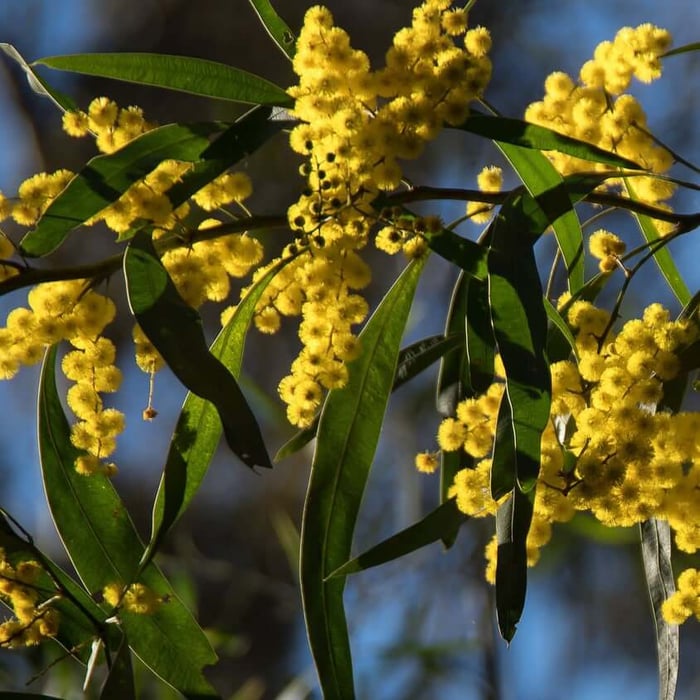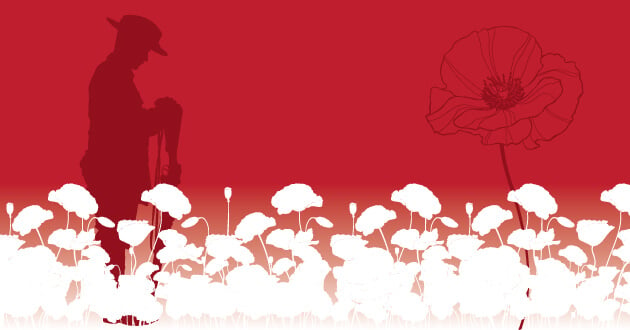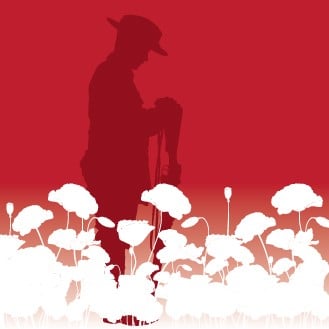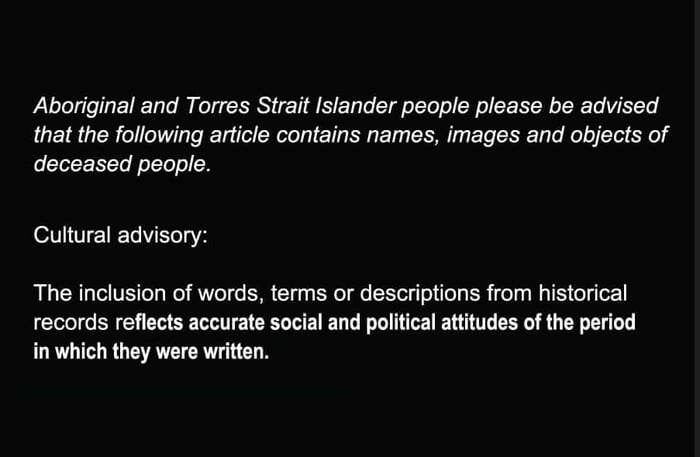
Corporal Harry Thorpe MM
Harry Thorpe was a Brabuwooloong man from near Lakes Entrance in Victoria. He was born at the Lake Tyers Mission Station but grew up on his father’s farm, where he learned to grow food and hunt kangaroos. Like any farmer, Harry was also a labourer and at times stripped wattle bark which he sold to tanneries.
In February 1916 at the age of 29, Harry enlisted in the Australian Imperial Force and by July had joined the 7th Battalion in France. He soon became well known for his courage.
Not long after arriving in France, Harry was seriously wounded at the Battle of Pozières. After spending a couple of months recovering, Harry rejoined his unit and was promoted to Lance Corporal. In April 1917 he was again wounded in an attack, on the Hindenberg Line near the village of Bullecourt. This time his injuries were not as severe and he was back with his battalion a month later.
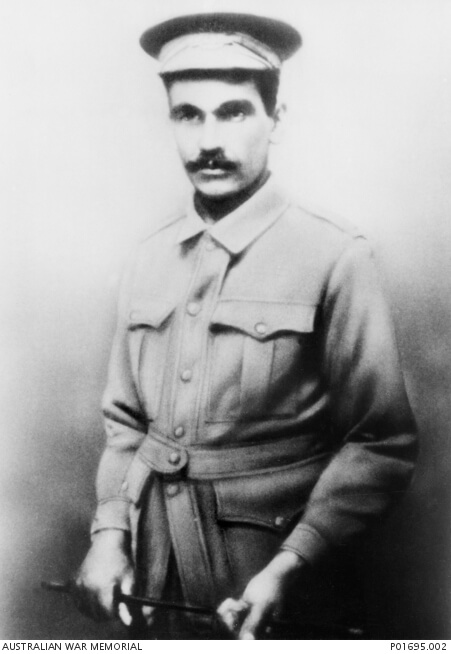 Studio portrait of Corporal Harry Thorpe
Studio portrait of Corporal Harry Thorpe
In October 1917 Harry successfully led his section during operations at Broodseinde Ridge, part of the Third Battle of Ypres in Belgium. While clearing enemy dugouts and pillboxes Harry valiantly showed a disregard for his own personal safety. He was promoted to Corporal and was awarded the Military Medal for ‘bravery in the field’.
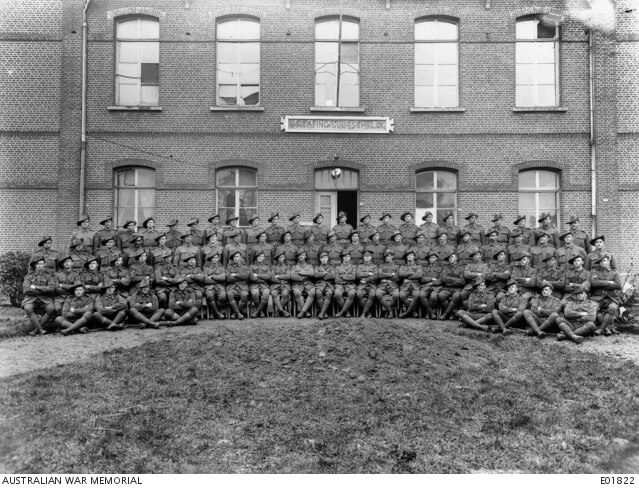 Group portrait of the members of the 2nd Brigade. Left to right, back row: 3412 Sergeant (Sgt) R. Smith, 5th Battalion; 3246 Sgt V. J. Campbell, 5th Battalion; 2467 Sgt L. Mallett, 6th Battalion; 3847 Sgt F. R. Mather, 6th Battalion; 1221 Corporal (Cpl) G. H. Jefferies, 8th Battalion; 369 Sgt T. I. Birch MM, 8th Battalion; 76 Sgt F. Andrews, 5th Battalion; 2543 Sgt E. Israel, 6th Battalion; unidentified; 5247 Sgt F. B. Anderson, 7th Battalion; 3264A Cpl F. Smith, 7th Battalion; 3409 Sgt J. Simpson, 5th Battalion; 1559 A. T. Johnson, 5th Battalion; 557 Cpl W. Reed, 6th Battalion; 1710 Cpl J. Boyce, 5th Battalion; 281 Sgt W. Anderson, 6th Battalion; 3283 Cpl B. Turner, 8th Battalion; 1396 Sgt D. McCormack, 7th Battalion; 245 Sgt A. H. Johnson, 7th Battalion; 979 Sgt J. Inger, 8th Battalion; 3155A Lance Corporal (LCpl) J. B. Lorimer, 7th Battalion; 2074 Sgt G. A. Rackham, 6th Battalion; unidentified; 2895 Cpl L. Wigg, 6th Battalion. Third row: 3404 Cpl L. J. Mayne, 6th Battalion; 2343 Cpl R. H. Davies, 7th Battalion; 569 Sgt W. V. Woodnorth, 6th Battalion; 5459 Cpl H. Thorpe, 7th Battalion, an Aboriginal soldier and later recipient of the Military Medal (MM); 5985 Cpl R. S. C. Black, 7th Battalion; 3942 Sgt O. W. Shrives, 6th Battalion; 1225 Sgt E. A. Crook, 8th Battalion; 966 Sgt E. J. H. Barker, 5th Battalion; 354 Sgt A. C. Robertson, 8th Battalion; 3868 Cpl E. Hungerford MM, 5th Battalion; 301 Cpl J. Campbell MM, 8th Battalion; 1664 Sgt W. Waterman, 5th Battalion; 2615 Sgt T. H. Donaldson, 7th Battalion; 387 Company Sergeant Major (CSM) H. Burton, 6th Battalion; 1932 Sgt C. W. Cutler, 5th Battalion; 1115 Cpl W. Barbour, 7th Battalion; 2139 Cpl P. J. Thompson, 8th Battalion; 1162 Cpl E. Oldham, 7th Battalion; 1141 Cpl E. J. Bailey, 8th Battalion; unidentified; 3366 Cpl M. C. Hoathe, 7th Battalion; Sgt D. Doyle; 3946 Cpl J. C. Spence, 6th Battalion. Second row: 5768 Sgt A. G. Stewart, 5th Battalion; 4730 Cpl R. E. Ball, 7th Battalion; 799 Cpl C. G. Kingsley, 7th Battalion; 196 Cpl J. Ross, 7th Battalion; 445 Cpl W. Moodie, 5th Battalion; 2627 Sgt J. Niller, 5th Battalion; 340 Sgt J. R. Robb, 6th Battalion; 1269 Cpl B. F. Adamson, 8th Battalion; unidentified; 714 Sgt C. C. Fraser, 5th battalion; 723 Sgt A. J. Summerfield, 8th Battalion; Lieutenant (Lt) D. Robinson, 5th Battalion; Cpl C. McE. Lillie DSO; Lt L. Cadell, 6th Battalion; CSM Tirner; 5 Sgt W. J. Bingham, 5th Battalion; 2540 LCpl W. Gardner, 6th Battalion; 3943 Cpl J. T. Swain DCM, 8th Battalion; 4481 Sgt P. S. Draper, 6th Battalion; 3316 Cpl G. Lloyd, 7th Battalion; 2842 Cpl Kelly, 7th Battalion; 2436 Cpl B. Stuckey, 7th Battalion; 3087 Cpl W. S. Mears, 7th Battalion; 2588 Cpl L. King, 6th Battalion; 3068 Sgt T. Duncombe DCM, 8th Battalion. Front row: 2701 Cpl G. Green, 5th Battalion; 1111 Sgt J. R. Jorgen, 8th Battalion; 3119 Cpl R. Marr, 8th Battalion; 3026 Sgt W. H. Holmes, 6th Battalion; unidentified; unidentified; 204 Cpl J. W. Clarke, 5th Battalion; 625 Sgt L. W. R. Veal, 8th Battalion. Taken at Locre, Belgium. 20 February 1918.
Group portrait of the members of the 2nd Brigade. Left to right, back row: 3412 Sergeant (Sgt) R. Smith, 5th Battalion; 3246 Sgt V. J. Campbell, 5th Battalion; 2467 Sgt L. Mallett, 6th Battalion; 3847 Sgt F. R. Mather, 6th Battalion; 1221 Corporal (Cpl) G. H. Jefferies, 8th Battalion; 369 Sgt T. I. Birch MM, 8th Battalion; 76 Sgt F. Andrews, 5th Battalion; 2543 Sgt E. Israel, 6th Battalion; unidentified; 5247 Sgt F. B. Anderson, 7th Battalion; 3264A Cpl F. Smith, 7th Battalion; 3409 Sgt J. Simpson, 5th Battalion; 1559 A. T. Johnson, 5th Battalion; 557 Cpl W. Reed, 6th Battalion; 1710 Cpl J. Boyce, 5th Battalion; 281 Sgt W. Anderson, 6th Battalion; 3283 Cpl B. Turner, 8th Battalion; 1396 Sgt D. McCormack, 7th Battalion; 245 Sgt A. H. Johnson, 7th Battalion; 979 Sgt J. Inger, 8th Battalion; 3155A Lance Corporal (LCpl) J. B. Lorimer, 7th Battalion; 2074 Sgt G. A. Rackham, 6th Battalion; unidentified; 2895 Cpl L. Wigg, 6th Battalion. Third row: 3404 Cpl L. J. Mayne, 6th Battalion; 2343 Cpl R. H. Davies, 7th Battalion; 569 Sgt W. V. Woodnorth, 6th Battalion; 5459 Cpl H. Thorpe, 7th Battalion, an Aboriginal soldier and later recipient of the Military Medal (MM); 5985 Cpl R. S. C. Black, 7th Battalion; 3942 Sgt O. W. Shrives, 6th Battalion; 1225 Sgt E. A. Crook, 8th Battalion; 966 Sgt E. J. H. Barker, 5th Battalion; 354 Sgt A. C. Robertson, 8th Battalion; 3868 Cpl E. Hungerford MM, 5th Battalion; 301 Cpl J. Campbell MM, 8th Battalion; 1664 Sgt W. Waterman, 5th Battalion; 2615 Sgt T. H. Donaldson, 7th Battalion; 387 Company Sergeant Major (CSM) H. Burton, 6th Battalion; 1932 Sgt C. W. Cutler, 5th Battalion; 1115 Cpl W. Barbour, 7th Battalion; 2139 Cpl P. J. Thompson, 8th Battalion; 1162 Cpl E. Oldham, 7th Battalion; 1141 Cpl E. J. Bailey, 8th Battalion; unidentified; 3366 Cpl M. C. Hoathe, 7th Battalion; Sgt D. Doyle; 3946 Cpl J. C. Spence, 6th Battalion. Second row: 5768 Sgt A. G. Stewart, 5th Battalion; 4730 Cpl R. E. Ball, 7th Battalion; 799 Cpl C. G. Kingsley, 7th Battalion; 196 Cpl J. Ross, 7th Battalion; 445 Cpl W. Moodie, 5th Battalion; 2627 Sgt J. Niller, 5th Battalion; 340 Sgt J. R. Robb, 6th Battalion; 1269 Cpl B. F. Adamson, 8th Battalion; unidentified; 714 Sgt C. C. Fraser, 5th battalion; 723 Sgt A. J. Summerfield, 8th Battalion; Lieutenant (Lt) D. Robinson, 5th Battalion; Cpl C. McE. Lillie DSO; Lt L. Cadell, 6th Battalion; CSM Tirner; 5 Sgt W. J. Bingham, 5th Battalion; 2540 LCpl W. Gardner, 6th Battalion; 3943 Cpl J. T. Swain DCM, 8th Battalion; 4481 Sgt P. S. Draper, 6th Battalion; 3316 Cpl G. Lloyd, 7th Battalion; 2842 Cpl Kelly, 7th Battalion; 2436 Cpl B. Stuckey, 7th Battalion; 3087 Cpl W. S. Mears, 7th Battalion; 2588 Cpl L. King, 6th Battalion; 3068 Sgt T. Duncombe DCM, 8th Battalion. Front row: 2701 Cpl G. Green, 5th Battalion; 1111 Sgt J. R. Jorgen, 8th Battalion; 3119 Cpl R. Marr, 8th Battalion; 3026 Sgt W. H. Holmes, 6th Battalion; unidentified; unidentified; 204 Cpl J. W. Clarke, 5th Battalion; 625 Sgt L. W. R. Veal, 8th Battalion. Taken at Locre, Belgium. 20 February 1918.
Harry and the 7th Battalion went on to fight in the Flanders region until mid-1918. They returned to the Somme region and took part the Battle of Lihons on 9 August that year. During the fighting Harry was found by stretcher-bearers with a severe wound to his stomach. He was taken to a dressing station but died shortly afterwards. He is buried at the Heath Cemetery near Harbonnières, not far from where he fought his last battle.
This Time in History:
The Defence Act 1903 excluded Aboriginal and Torres Strait Islander people as ‘not substantially of European origin or descent’. They were not allowed to vote, enlist or receive a pension. To get around this, some men lied about their heritage, even going so far as to claim that they were Maori or Indian. As the First World War continued and reinforcements were needed, restrictions relaxed regarding age and height, and the backgrounds of those enlisting were sometimes overlooked by recruiters. By the end of that war it is estimated that more than 1000 Aboriginal and Torres Strait Islander men had served.
Read more on Stories of Indigenous Service.
Aboriginal and Torres Strait Islander peoples have a long-standing tradition of fighting for Country, in all conflicts and operations in which the nation’s military forces have been involved, and they continue to serve with great honour in the Australian Defence Force. The ‘Serving Country for 60,000 Years’ Collection commemorates the story of Aboriginal and Torres Strait Islander peoples’ service in the defence of Australia, dating back to before Federation to modern times.
Explore the full collection here.







